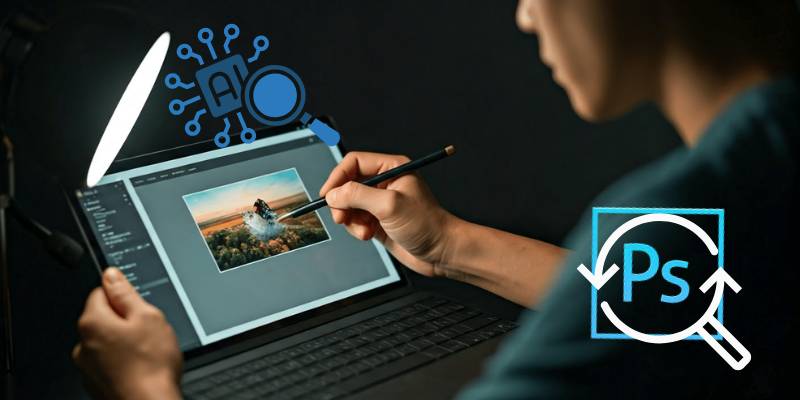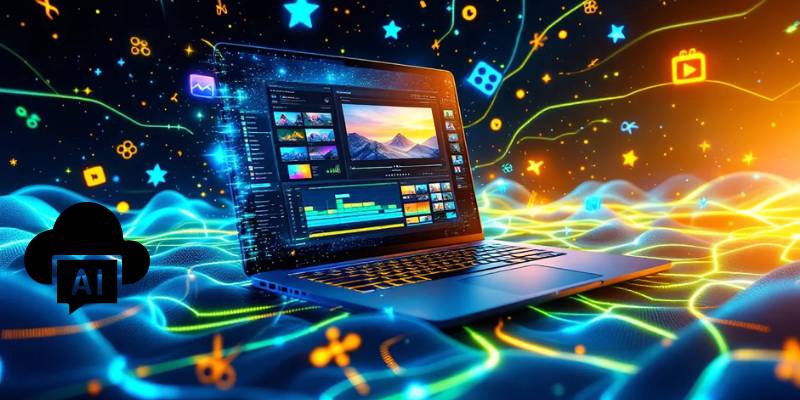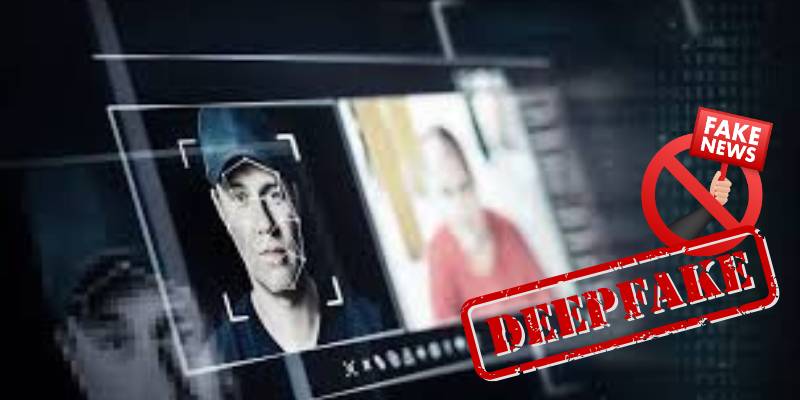I remember the first time I opened Photoshop. I was in college, staring at an interface that looked like the cockpit of a jetliner. Layers, masks, brushes—so many buttons I was terrified I’d break something just by clicking.
But once I got past the fear, I felt powerful. Photoshop was the holy grail for creative expression, photo manipulation, and design.
Fast forward to today, and things look very different. AI photo editors are popping up everywhere, promising results that used to take hours in Photoshop—done in minutes, even seconds.
Some claim they can remove backgrounds with one click, adjust lighting automatically, or even generate entirely new imagery from a simple text prompt. It feels like magic.
But here’s the question that nags at me: does this mean Photoshop, the longtime king of photo editing, is on its way out?
Or are these AI tools just shiny shortcuts that can never really replace the depth of Adobe’s flagship program?
That’s the debate we need to have.
Why AI Photo Editors Are Taking Off
AI isn’t creeping into editing—it’s storming the gates. A few reasons explain why.
- Speed: What used to take 30 minutes of masking and refining edges can now happen in seconds.
- Accessibility: Tools like Canva, Luminar Neo, and Fotor are designed for people who don’t want to spend years learning software.
- Creativity Unlocked: Text-to-image features allow users to literally describe what they want, and the AI does the rest.
And in an attention economy where businesses, influencers, and everyday users all need visuals yesterday, speed and accessibility often trump perfection.
But does “fast and easy” equal “good enough”?
The Core Difference Between AI and Photoshop
Here’s the way I see it:
- Photoshop is like a fully stocked kitchen. You can cook anything, but you’d better know your tools, techniques, and recipes.
- AI photo editors are like ordering delivery. Quick, convenient, and often satisfying, but you don’t have full control over the ingredients or process.
Both have their place, but they serve different needs.
Photoshop thrives on precision and customization. Want to adjust the hue of one tiny corner of an image? Done. Need to retouch skin while preserving pores? Absolutely possible.
AI photo editors, on the other hand, aim to automate the heavy lifting. They’re about AI making professional-quality view adjustments in one swoop, even for users who’ve never heard of layers or masks.
AI’s Magic Tricks (That Photoshop Still Makes Hard)
To give credit where it’s due, some AI features genuinely outshine Photoshop right now.
- Background Removal
What once required hours of careful lassoing is now a single click. And it’s remarkably accurate. - Text-to-Image Generation
Want a surreal landscape with purple skies and floating castles? AI can conjure it from words alone. Photoshop? It still relies mostly on human creativity and manual input. - Lighting and Color Corrections
AI editors analyze the whole image and adjust accordingly. While Photoshop offers incredible tools, you need to know which sliders to pull. - Restoration
Old, damaged photos can be “healed” by AI tools with shocking accuracy, filling in missing details that Photoshop would require tedious manual work to replicate.
Where Photoshop Still Holds the Throne
But don’t count Photoshop out just yet.
- Granular Control: Professionals who need pixel-perfect editing can’t rely on AI’s “close enough” approach.
- Creative Depth: Advanced compositing, 3D modeling, and animation features are still Adobe territory.
- Reliability: AI often gives you something—but not necessarily what you envisioned. Photoshop, for all its learning curve, delivers exactly what you want if you know how to use it.
In short: AI photo editors shine in speed and convenience. Photoshop shines in control and precision.
From Insights: What Professionals Are Saying
I’ve asked designers and photographers how they feel about the AI wave. Here’s what I heard from insights across forums and interviews:
- “AI saves me hours on background cleanup. But when I need my client’s exact vision, I still go back to Photoshop.”
- “Sometimes AI surprises me in good ways—it creates things I’d never think of. But other times it gives me garbage, and I waste time trying to fix it.”
- “Photoshop is my paintbrush. AI feels more like a guessing game. I like the control too much to give it up.”
So, professionals aren’t abandoning Photoshop, but they are weaving AI tools into their workflow.
The Business Side of Things
Adobe isn’t sleeping on this trend. In fact, it’s pushing hard into AI with its Firefly platform, which integrates generative AI directly into Photoshop. They’re betting that people want the best of both worlds: AI speed plus Photoshop precision.
And here’s the smart move—they’re framing Firefly as “ethical AI,” trained on Adobe Stock images rather than scraped web content. In a world where lawsuits over AI training data are piling up, this is no small detail.
Still, Adobe faces stiff competition. Smaller AI-first companies are nimble, inexpensive, and laser-focused on ease of use.
Top Trends in AI Photo Editing
If you want to understand where this is heading, here are the top trends shaping AI photo editing today:
- Generative Fill: Expanding images beyond their original frame with realistic detail.
- One-Click Style Transfer: Instantly turning a photo into a Van Gogh painting or a cinematic still.
- Face and Body Editing: Hyper-realistic retouching that raises serious ethical questions.
- Workflow Integration: AI tools embedding directly into apps like Canva, Figma, and even social media platforms.
These trends suggest AI isn’t just competing with Photoshop—it’s infiltrating every corner of digital creativity.
The Dark Trends We Can’t Ignore
Of course, it’s not all sunshine and rainbows. There are dark trends emerging that we need to take seriously.
- Deepfakes: AI editing tools make it disturbingly easy to create fake images of real people.
- Unrealistic Beauty Standards: Overuse of AI retouching can worsen body image issues, especially for younger audiences.
- Job Displacement: Freelance retouchers may see less demand as AI handles basic tasks cheaply.
- Data Bias: If AI tools are trained on limited datasets, they may reinforce stereotypes or distort reality.
We can’t talk about the rise of AI photo editors without acknowledging these risks.
How AI Photo Editors Are Used Beyond Photography
Interestingly, AI editing isn’t just about pretty pictures. It’s sneaking into other industries too:
- Marketing: Brands use AI to quickly generate campaign visuals without expensive shoots.
- E-commerce: Retailers swap out backgrounds, change product colors, and create variations effortlessly.
- Real Estate: Listings get “enhanced” with sunnier skies or tidier lawns—raising questions of honesty.
- Social Media: Influencers rely on AI for content churn, sometimes blurring the line between authenticity and fabrication.
It’s also a cousin to video editing, where AI creates entire clips, simulating what we once thought required professional crews. The overlap is growing, and fast.
My Personal Take
So, can AI photo editors replace Photoshop? My short answer: no. But they will redefine how we use it.
AI is incredible at cutting grunt work and sparking creativity, but when the stakes are high—say, a commercial ad campaign or fine art photography—Photoshop’s depth is unmatched.
What excites me most is the potential for hybrid workflows. Imagine starting a concept in an AI tool to generate possibilities, then polishing it in Photoshop until it shines. That’s the sweet spot.
But here’s my concern: if we rely too heavily on AI, we risk losing the craft of editing itself. Knowing how to manipulate light, shadow, and texture isn’t just technical—it’s an art form. And art, I believe, deserves to be preserved even in an AI-driven world.
The Future: Complement, Not Replace
AI photo editors aren’t killing Photoshop—they’re forcing it to evolve.
In the near future, I think we’ll see:
- AI-powered Photoshop dominating the pro market.
- Lightweight AI editors catering to hobbyists, small businesses, and influencers.
- More ethical debates around authenticity and misinformation.
And maybe that’s the best outcome. We don’t have to choose between the two—we get to use both, depending on what we need.
Closing Thoughts
AI photo editors are exciting, powerful, and yes, sometimes scary. They’ve lowered the barrier to entry for creative expression and made tasks that once felt tedious almost effortless. But can they fully replace Photoshop? I don’t think so.
Photoshop is still the gold standard for professional precision. What AI tools bring is speed, accessibility, and democratization. And together, they might just reshape creativity in ways we’re only beginning to imagine.
The key, as always, is balance. Embrace the magic of AI, but don’t abandon the craft that made Photoshop legendary. Because at the end of the day, editing isn’t just about pixels—it’s about vision. And that’s something no algorithm can fully own.


